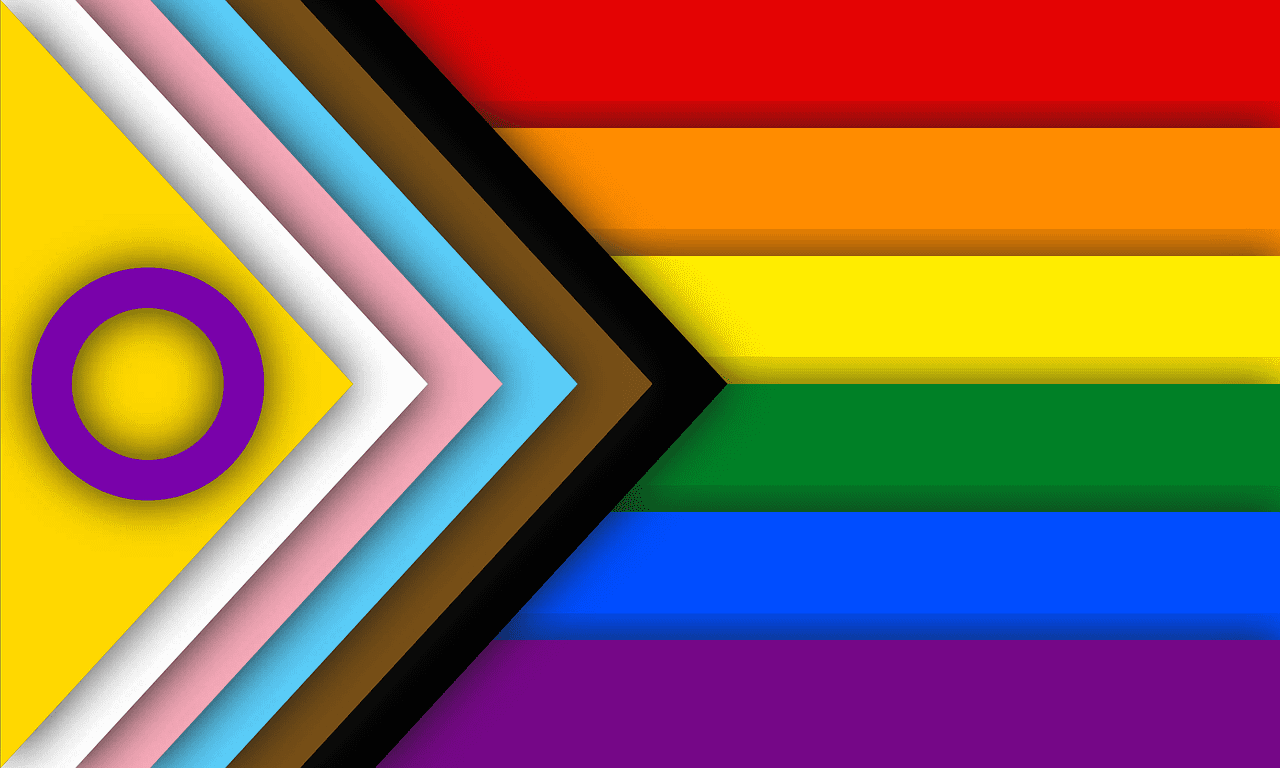The topic of gender identity has always fascinated me, but it’s become a thorny subject in our current social climate. Emotions are high, disinformation is everywhere, and real human lives are at stake due to reactionary violence towards trans and nonbinary people. Learning about how others experience and express gender doesn’t have to be scary though! As someone who spent most of their life wondering why they never fit in, I would like to offer you my perspective on gender identity and how I came to recognize myself as nonbinary.
I promise that as you read what I’m sharing, it’s okay for you to question what I say and to ask questions of yourself about your own gender identity. My hope is that you’ll learn something valuable and come to a new understanding of why it’s important to respect the way others choose to present themselves to the world, especially in relation to gender.
Speaking for Myself and My Journey
I can’t speak for all nonbinary and trans people because I know my individual experience cannot possibly represent millions of unique perspectives. What I can do is speak for myself and my journey, while also helping to clear up some confusion or misunderstandings about nonbinary people in general.
For me, it’s been a years-long process of self-reflection, as well as confronting my own biases, to realize that I don’t feel strongly tied to a male or female expression of gender. I want my outward appearance to convey who I am, but to be perceived as a “man” or “woman” does nothing to affirm the person I see myself as on the inside. The interior space of my mind that only I see is not gendered, which makes any gender I outwardly express feel like a costume. I feel very lucky to be several years into the process of rebuilding my own gender identity as an adult, and I believe this will be a life-long learning experience.
Humans aren’t born with a binary view of gender, just like we aren’t born with an understanding of race or religion. These identity concepts are taught, conditioned from birth, and we learn them as we grow. The indoctrination of binary gender is so ubiquitous that by the time we make it to our first day of kindergarten, most of us have fully internalized the idea that we have just one choice: we are either a boy or a girl.
Just like all the other five-year-old boys, I scoffed at playing house and would never be caught dead wearing anything pink (even though I loved my Lisa Frank pencil bag). Despite my outward disdain for all things feminine, I also vividly remember how unfair it felt to be excluded from “girly” things to feel safe and not be bullied. Years later I would connect the dots that my outward disdain (that is, my internalized misogyny), was a way for me to cope with these feelings of loss and jealousy for my feminine side, which I never felt like I was allowed to express, let alone cultivate. Suppressing femininity in favor of masculinity helped me fit in and made me feel safe, but it was also keeping me from flourishing.
An “Aha Moment”
There was no single epiphany moment where an androgynous lightening bolt of understanding came down from the heavens to change my life forever. The closest thing to an “aha moment” came in 2016 when I was attending culinary school in North Carolina, the state that arguably started the “trans panic” when Governor McCrory signed the infamous and now overturned Bathroom Bill into law. As a way to protest what I saw as a clear civil rights violation and show solidarity with my trans friends, I started painting my fingernails with bold colors and glitter. Despite the fact that I have always gone against the grain, I had never really experimented with my own presentation of gender before that. I was amazed by how many dirty looks and scathing comments I got from strangers over something as small as the color of my fingernails!
This vitriolic reaction only made me more curious about why everyone was so hung up on other people’s choices around how they presented themselves to the world. In addition to pushback from the straight world, I also found myself accepted into a vibrant subculture where the only requirement for acceptance was to radiate acceptance myself. By altering my appearance ever so slightly, I unintentionally marked myself as “safe” to trans, nonbinary, and other queer people in general. Knowing that others could see that I was someone who would accept them for who they are made me, in turn, feel more accepted than I ever had before. From there, it only took a few more steps for me to see that the male gender I had taken for granted was something I never chose or even cared about, but it was the single biggest factor informing strangers about who I was.
Understanding Gender Identity and Presentation
One of the first steps to understanding gender identity and presentation is to know the difference between sex and gender. When you and I were born, we were each assigned a sex (female or male) based on our physiology, even when a baby’s physiology is intersex, with reproductive anatomy or chromosomal configurations that don’t fit the traditional definitions of male or female sex.
In the United States in 2023, we live in a society that has constructed a rigid, binary set of norms for masculinity and femininity stemming from European colonial views of what it meansto be male or female based on a person’s assigned sex. What many people think of as gender is really a collection of social norms associated with a male or female sex assignment. In contrast, gender is an intangible, fluid concept that doesn’t necessarily have much to do with a person’s sex. In other words, sex and gender are only linked as much as a society collectively decides to impose that link between sex and gender on ourselves and others. Gender theorist Judith Butler first coined the term “gender performance” and later, “gender performativity” to describe the unconscious ways people express their gender identity in public.
This brings me to the next important concept: presentation. Presentation refers to the way a person unconsciously and consciously chooses to represent themselves to others. It includes the clothing we choose to wear, our mannerisms, our names, and the pronouns we use. Presentation is a daily “performance” for everyone, whether we realize we are engaging in it or not. While presentation is an important part of someone’s identity, I try to remind myself regularly that the way someone presents their gender identity is just one reflection of who they are, not all that they are.
Many aspects of presentation are subconscious or even out of a person’s control. For example, I almost always wear a beard, which causes most people to immediately assign a masculine identity to me. In truth, I wear a beard because it’s inconvenient and uncomfortable for me to shave—and my beard is cute! The key is to not assume that you know everything about someone else’s internal experience based on one or two pieces of their performance of gender. Once you start giving folks more leeway with their presentation, you might find that it’s a lot easier to do the same for yourself.
“Cis” and “Trans” Defined
For most people, the gender identity that they express corresponds to the sex they were assigned at birth, even though they still may be concerned about whether they are “man enough” or “woman enough.” They follow the established norms for people assigned the same sex as they are, and it feels natural to do so.
People who experience the relationship of sex and gender in this way are referred to as “cis,” which is not a derogatory term. Cis is just the Latin prefix meaning “on the same side as” as opposed to the prefix “trans,” meaning “on the opposite side as.” If you feel comfortable with your assigned sex and the corresponding gender, then you are cisgender.
For many of us, however, expressing our gender according to our assigned sex or in a way that is accepted as strictly “male” or “female” feels oppressive. For me it feels like being forced to suppress all but one small sliver of who I am. For better or worse, I want the people in my life to know me for who I am. I want the relationships I form to be based on understanding and trust, and that’s only possible when you show the people close to you who you are as honestly as possible. That process starts internally by being honest with yourself first.
Just Be Polite, Patient, and Kind
If there’s one thing I hope you’ll take away from reading this, it’s that we are all more than our presentation, more than our sex or our gender, and more than any of the other aspects of our identities that we let divide us. We are not our jobs, pronouns, clothing, or even names. These are all just signifiers of who we want people to see us as, but there’s always a real human being behind every performance. It doesn’t cost anything to be kind and respect the wishes of others when it comes to their own experience of gender.
With regard to pronouns, for example, I use they/them for more professional settings and he/him with people who already know me. If you find yourself unsure about how to refer to someone, it’s almost always okay to ask, and it may feel easier if you introduce yourself first with both your name and the pronouns you use.
When in doubt, just be polite, patient, and kind!



